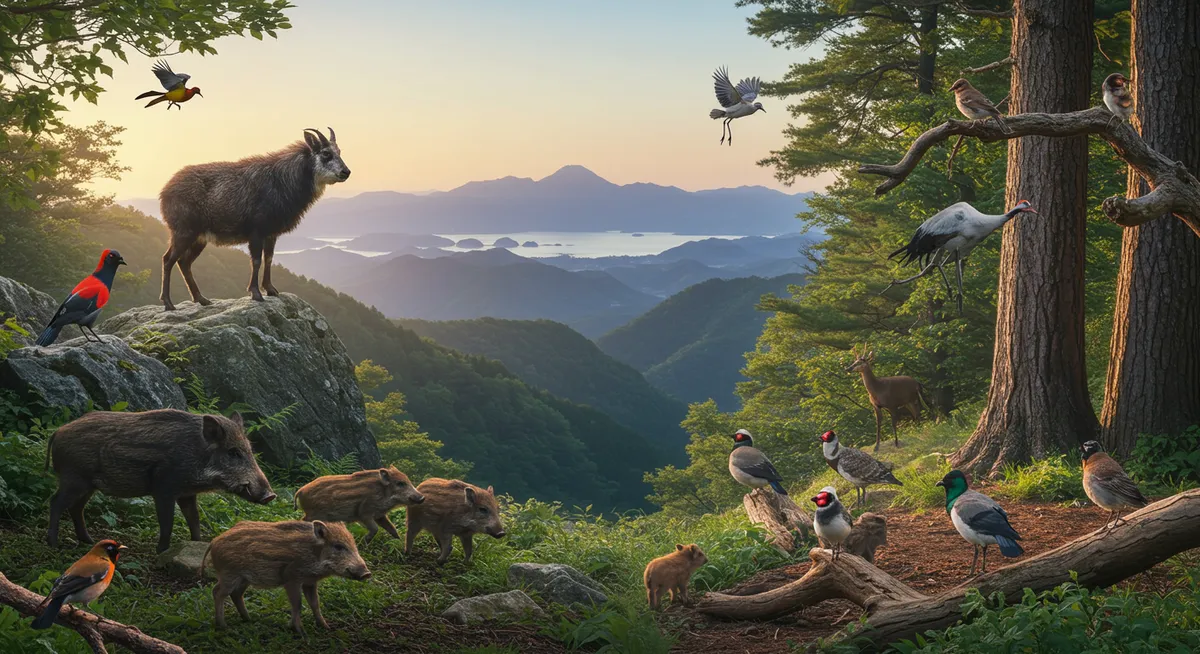
Hiroshima Region Wildlife Viewing Guide
Table of Contents
Want to find the best nature experiences for this destination? Chat with our nature tourism specialist!
Get Nature TipsCategory: wildlife-viewing-hiroshima-region
Your Guide to Wildlife Viewing in the Hiroshima Region
Having spent considerable time exploring Hiroshima's diverse landscapes, I've discovered that beyond its profound historical significance, the region offers truly incredible opportunities for wildlife viewing. While often overshadowed by its poignant past, the natural beauty surrounding Hiroshima, from tranquil islands to rugged mountains, teems with fascinating creatures. This guide will help you uncover the best locations and methods to respectfully observe the local fauna, ensuring a memorable eco-adventure.
Miyajima Island: Iconic Deer & Forest Dwellers
Miyajima Island is perhaps the most famous spot for wildlife viewing in the Hiroshima region, primarily known for its numerous sika deer. These gentle animals roam freely, often seen around the iconic Itsukushima Shrine. However, beyond the deer, the island's forested interior, particularly along its hiking trails, offers chances to spot unique bird species like the Japanese white-eye or even small mammals. A personal observation: while the deer are accustomed to humans, maintaining a respectful distance and avoiding feeding them is crucial for their well-being and natural behavior.
Seto Inland Sea: Marine Life and Coastal Birds
The tranquil waters of the Seto Inland Sea, surrounding Hiroshima, are surprisingly rich for marine and avian wildlife viewing. Boat tours from coastal towns like Kure or Onomichi can provide opportunities to spot finless porpoises, a small cetacean native to these waters. Furthermore, the numerous small islands and coastal areas serve as vital habitats for migratory birds, including various gulls, cormorants, and herons. Exploring these serene waters offers a different perspective on the Hiroshima region's biodiversity, connecting you with its aquatic inhabitants.
Northern Mountains: Bears, Monkeys, and Forest Birds
Venturing into Hiroshima's northern mountainous areas, such as the Chugoku Mountains, unveils a wilder side of the region ideal for avid wildlife viewing. This rugged terrain is home to larger mammals like the Japanese macaque (snow monkey) and even the elusive Asiatic black bear, though sightings are rare and require caution. For hiking enthusiasts following a Hiroshima hiking trails guide, you'll encounter a rich variety of forest birds, including various woodpeckers and songbirds. Remember, respecting wildlife means observing from afar and never approaching potentially dangerous animals in their natural habitat.
Hiroshima City Parks: Unexpected Urban Nature
Even within Hiroshima City, opportunities for wildlife viewing exist in its well-maintained parks and green spaces. Shukeien Garden and the Peace Memorial Park, while urban, attract a surprising array of birdlife, from common sparrows and crows to more distinctive species like the black kite soaring overhead. These areas provide an accessible glimpse into urban ecology. For those keen to explore more, visiting some of the best parks in Hiroshima for nature can reveal hidden pockets of biodiversity, proving that nature thrives even in the heart of the city.
Responsible Wildlife Viewing Best Practices
To ensure sustainable and ethical wildlife viewing in the Hiroshima region, always adhere to best practices. This includes keeping a respectful distance from animals, never feeding wild creatures, and avoiding disturbing their natural behaviors. Use binoculars or a telephoto lens for close-up observations. It’s also crucial to stay on marked trails, dispose of all trash properly, and minimize noise. Your actions directly impact the preservation of these precious ecosystems. By following these guidelines, you contribute positively to the region's conservation efforts.
Frequently Asked Questions
What's the best time of year for wildlife viewing in Hiroshima?
Are there any dangerous animals to be aware of in the Hiroshima region?
Can I feed the deer on Miyajima Island?
Exploring the Hiroshima region for wildlife viewing offers a fascinating dimension to your travel, revealing the natural beauty that complements its profound history. From the iconic deer of Miyajima to the diverse birdlife along the Seto Inland Sea and the elusive mammals of the northern mountains, there's a world of discovery awaiting. Remember to practice responsible tourism, respecting the animals and their habitats. For more insights into exploring Japan's natural wonders, consider checking out TouristNature.com to plan your next eco-conscious adventure.